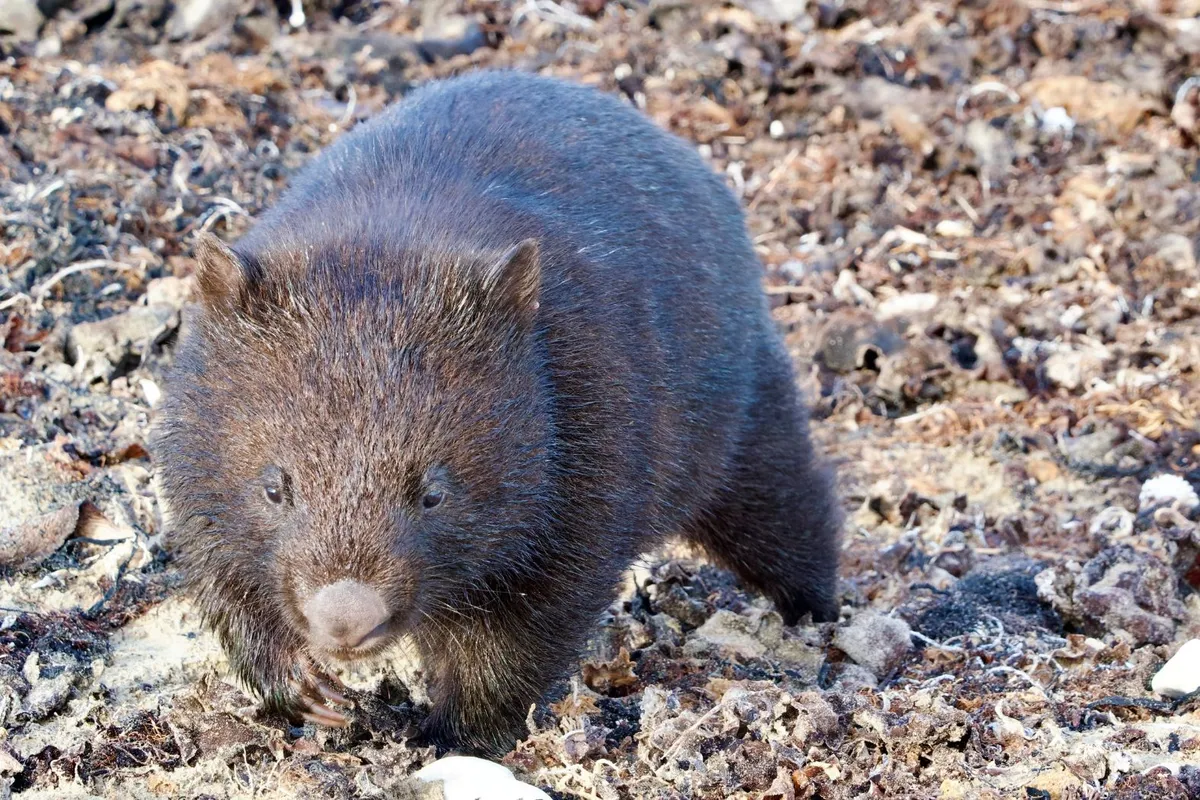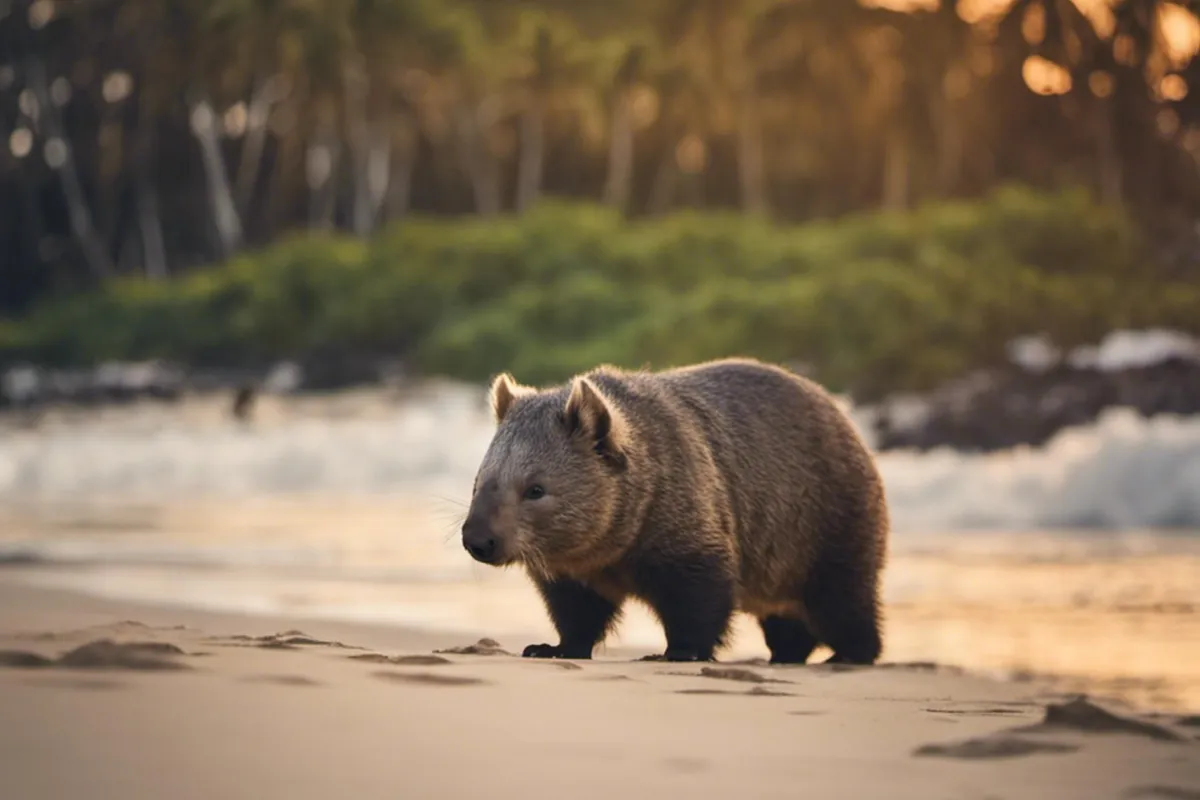Tourists on a beach in Tasmania, Australia, were puzzled when they spotted a wombat wading in the ocean and appearing to drink seawater and eat aquatic plants.
They shared their footage with the Wombat Protection Society of Australia (WPSA) who are looking into what might be happening.
- “If I were a vegetable, I would not mess with a pygmy rock-wallaby"
- Why female kangaroos have pouches
- Tasmanian devil: where does it get its devilish name?
What was the wombat doing in the ocean?
Wombats are heavyset but adorable marsupials that live in Australia’s grasslands, forests and mountains. They can grow to just under one metre (about the same as a medium-sized dog) and look a bit like a teddy bear that was sat on and squished. They’re, perhaps, most well-known as being the only animal with cubed poop.
It’s not unknown for wombats to be found on beaches. One of the WPSA team often sees wombat footprints on her beach walks, says the charity in a Facebook post. But foraging in the ocean is unusual.
“Wombats have been known to eat aquatic plants around riverbanks and dams but, until now, to our knowledge, it has not been recorded that they eat sea plants,” says WPSA director Jen Mattingley.

Some seaweed and aquatic plants contain lots of vitamins, minerals and nutrients so it could be that the animal is trying to supplement its diet.
Although it looks like the wombat is drinking saltwater from the ocean, the WPSA think this is unlikely. One theory is that it’s drinking from an area where freshwater is entering the sea.
Another is explained by the unusual way these animals drink. “Wombats don’t lap, instead they push their mouth into the water and, while standing very still, they silently suck/syphon the water into their mouth,” says Mattingley. Because the wombat in the footage seems to be lapping at the water, the charity thinks it’s more likely it is just tasting it.

There are still many mysteries about the lives of wombats as these nocturnal animals live underground. That “makes observations and sightings more difficult,” says Mattingley.
They also like cooler temperatures, usually below 20 degrees celsius. This is why Tasmanian wombats are more likely to be seen during the daytime, she says: “The temperature is usually much cooler than mainland Australia and wombats are sometimes seen in late afternoon.”
“Wombats seen in daylight are usually sick with mange and sometimes nearly unrecognisable,” she adds. Mange – a skin disease caused by a parasitic mite called sarcoptes scabiei – is a major threat to wombats.
There are three species of wombat. While the common wombat is not currently threatened, the southern hairy-nosed wombat is near-threatened and the northern hairy-nosed wombat is critically endangered, according to the IUCN.
Members of the public who spot wombats – whether dead or alive – or their burrows can help research and protection efforts by uploading their recording to WomSAT: a database which has recorded over 23,000 wombat sightings to date.
More wildlife stories: